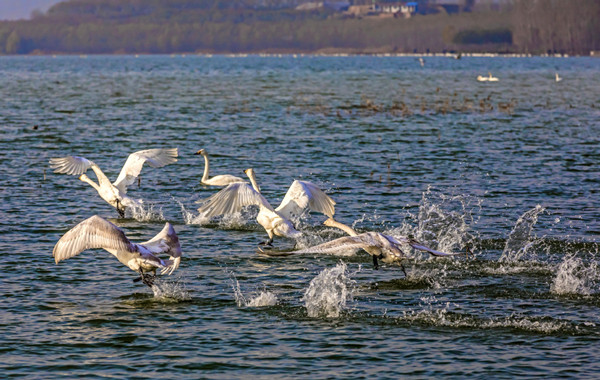A wetland flooded with migrating birds
By Yang Cheng| (China Daily)| Updated : 2020-03-17
Print Print
The Beidagang Wetland in coastal Tianjin municipality is an important stopover on one of the eight major bird-migration routes from South Asia to Australia, and many species rest in Beidagang's coastal area before flying to Australia or New Zealand.[Photo provided to China Daily]
China's top wetlands expert, Zhang Zhengwang, regularly brings international researchers, volunteers and photographers to the Beidagang Wetland in coastal Tianjin municipality.
The 60-year-old professor at Beijing Normal University's Life Sciences School leads them to study the ecology, especially the bird species, and protection.
"We visit frequently to investigate and record information for databases and for the wetland's bid for a UNESCO World Natural Heritage listing in 2022," he says.
Zhang says the research shows that the Beidagang Wetland has surpassed most standards required for the listing.
Tianjin is an important stopover on one of the eight major bird-migration routes from South Asia to Australia, and many species rest in Beidagang's coastal area before flying to Australia or New Zealand.
The birds will return to Tianjin on their northward migrations that go as far as the North Pole.
"The wetland is essential for the birds' breeding and growth. Without it, they may be in danger during their migrations," Zhang says.
Beidagang Wetland Management Center deputy director Sun Baonian says they've made concrete efforts to improve rare-bird protection in recent years.
A total of 1,347 Oriental storks have been identified in the wetlands, accounting for nearly 45 percent of the species' global migration population, he says. They prefer to nest in high trees and buildings.
Since Beidagang doesn't have enough high trees, the center has set up 20 artificial nesting areas on poles, 13 of which have been used by the waterfowl. And 17 chicks were born in the wetlands late last year.